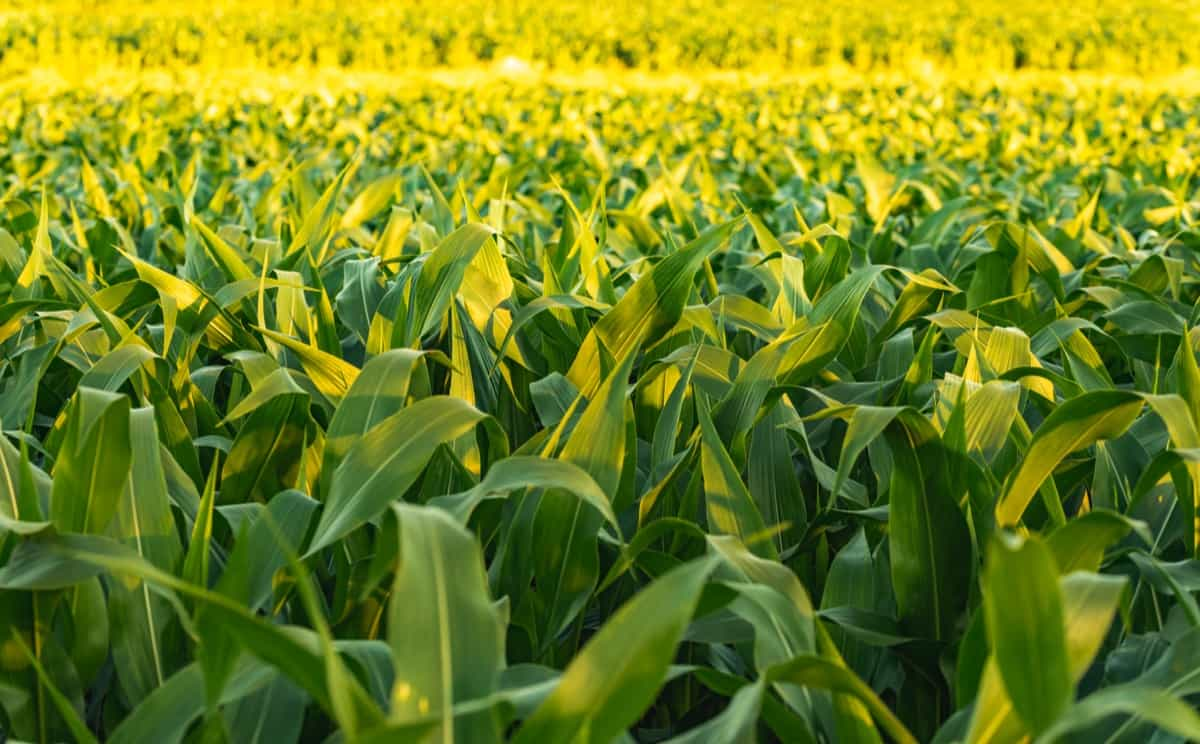Corn, also called Zea mays by scientists, is a super important crop grown worldwide. It’s versatile and packed with nutrients, making it a key player in farming worldwide. Let’s explore the captivating realm of corn farming, covering its diverse history, the complex cultivation methods, the abundance of uses it provides, and the challenges farmers encounter.
Health Benefits of Corn
- Corn makes our hearts and eyes healthier because it has antioxidants and phytosterols.
- Additionally, corn lowers our cholesterol, and lutein and zeaxanthin keep our eyes strong and protected from getting sick as we age.
- When we munch on corn, it gives our body energy that lasts for a while. It’s similar to a gradual fuel that assists us in staying active.
- Corn can help us feel satisfied and not hungry for quite some time. This is handy when we’re trying to manage our weight and cut down on eating.
- Corn is a unique food that gives our body the essential requirements. It holds dietary fibre, which is friendly to digestion and supports regular trips to the bathroom. Additionally, it contains vitamins and minerals that keep our body in good shape.
Top Corn Production State In India
Here’s a table listing the top corn-producing states in India:
| Rank | State |
| 1 | Karnataka |
| 2 | Maharashtra |
| 3 | Andhra Pradesh |
| 4 | Telangana |
| 5 | Madhya Pradesh |
| 6 | Bihar |
Major Varieties of Corn
| Variety | Characteristics and Uses |
| Dent Corn | – Field or yellow corn.
– Recognized by a dent at the crown of each kernel. – Used for livestock feed, industrial products, and foods. |
| Sweet Corn | – Higher sugar content, eaten fresh or frozen.
– Available in standard, sugar-enhanced, and supersweet types. |
| Popcorn | – Pops and expands when heated due to the hard outer shell.
– Consumed as a popular snack. |
| Flint Corn | – Hard, colourful kernels, often used for decoration. |
| Flour Corn | – Soft kernels used for making corn flour and cornmeal. |
| Pod Corn | – Kernels enclosed in leaf-like husks.
– Used historically for ceremonial and decorative purposes. |
| Hybrid Corn | – Crossbreeding for desirable traits like yield and quality. |
| Coloured Corn Varieties | – Unique colors like blue, red, and purple; ornamental or food. |
Corn Cultivation Process in India
Corn cultivation is a widely practised agricultural endeavour that involves the careful and strategic process of growing maize, commonly known as corn. This staple crop holds immense significance as a food source, fodder, industrial materials, and more. From preparing the soil to nurturing the plants through their growth stages, corn cultivation requires a blend of traditional wisdom and modern techniques to ensure optimal yield and quality.
| Aspect | Details |
| Climate | – Thrives in warm, humid conditions
– Sensitive to excessive or insufficient soil moisture – Prefers soil pH between 6.5 and 7.5 – Requires around 600mm well-distributed rainfall – Ideal germination temperature: 21℃ – Ideal growth temperature: 32℃ |
| Soil | – Can grow in various soil types
– Optimal growth in well-drained soils – Best soil type: deep, dark silt loam – Deep heavy-textured soils suitable in semi-arid climates – Sand loam soils preferred in sub-humid climates |
| Land Preparation | – 2-3 shallow tillage procedures during summer
– Deep ploughing for weed management and moisture conservation |
| Fertilization | – Pollination involves transferring pollen to silks on the ear
– Pollen tube carries male genetic material to female part on the cob |
| Irrigation | – Drip irrigation more efficient than centre pivot
– Drip irrigation retains 100% water for corn production |
| Pest and Disease | – Genetic resistance hybrids, seed fungicides, effective crop management, foliar fungicides |
| Management | – When needed for disease control |
| Weed Control | – Effective methods: mechanical cultivation, herbicide application |
| Harvesting | – Corn harvested at desired kernel moisture content
– Modern machinery like combine harvesters streamlines the process |
Climate:
Corn thrives in warm, humid conditions and is sensitive to too much and too little soil moisture. It can’t handle frost and prefers soil pH between 6.5 and 7.5. About 600mm of well-distributed rainfall supports its growth, with ideal germination temperature at 21℃ and growth at 32℃.
Soil:
Corn can thrive in different types of soils, with optimal growth seen in well-drained soils. The most favourable soil type is deep, dark silt loam. Deep soils with a heavy texture are suitable in semi-arid climates, while sand loam soils are preferred in sub-humid climates.
Land preparation
Performing 2-3 shallow tillage procedures during summer is crucial for proper land preparation. Additionally, incorporating deep ploughing can effectively manage weeds and enhance moisture conservation.
Corn farming has seen advancements over the years, benefiting from techniques such as using the Mahindra 245 tractor for efficient land preparation and management.
Fertilisation:
Pollination in corn involves moving pollen from the tassels to the silks that have come out on the ear. When pollen grains land on the ready silks, they grow a pollen tube. This tube carries the male genetic material and goes into the silk, reaching the female part connected to the cob.
Irrigation:
Drip irrigation has achieved yields up to 20% higher than centre-pivot irrigation, even while utilising the same quantity of water. In centre pivot systems, water sprayed onto leaves often evaporates, resulting in a significant loss. Conversely, drip irrigation ensures that 100% of the water enhances corn production.
Pest and Disease Management:
Integrated corn disease management incorporates various strategies, including choosing hybrids with genetic resistance to diseases, using seed fungicides, practicing effective crop management techniques, and applying foliar fungicides when disease risk justifies it.
Weed Control:
Weeds compete with corn plants for resources. Effective weed control methods, including mechanical cultivation and herbicide application, help maintain crop health.
Harvesting:
Corn is harvested when the kernels have reached the desired moisture content. Modern harvesting machinery, such as combine harvesters, streamline the process.
Challenges in Corn Farming
While corn farming offers numerous benefits, it also presents challenges that farmers must address:
- Pests and Diseases: Corn is susceptible to various pests, such as corn borers and armyworms, as well as diseases like rust and smut. These can lead to yield losses and increased production costs.
- Climate Change: Changing weather patterns, including droughts and unpredictable rainfall, can impact corn yields. Farmers must adapt to these changes through improved water management and drought-resistant varieties.
- Genetic Diversity: The dominance of a few commercially viable corn varieties raises concerns about genetic diversity. Preserving diverse strains is essential to prevent vulnerability to pests and diseases.
- Soil Health: Continuous monocropping can deplete soil nutrients and degrade soil structure. Implementing crop rotation and sustainable practices is crucial for maintaining soil health.
Innovations and Future Aspects of Corn Farming
As technology improves, the way we grow corn also improves. Scientists change corn’s genes to help it fight off bugs, survive weed-killing sprays, and even become more nutritious. Fancy farming methods that use GPS and data help us plant, give food, and water corn just right.
In the coming years, we aim to improve corn farming for the environment and tough times. Scientists are trying to create types of corn that can survive dry spells and not get sick easily. Also, they’re thinking about new ways to use corn, like making things that break down in nature and medicines.
Conclusion
The amazing progress of corn farming from small beginnings to global significance proves humans’ smartness and flexibility. Using earth-friendly ways to grow corn for food, money, and the planet is super important. Combining old and new methods can keep increasing corn as part of our farming story.
By using smart ways to grow corn, modern techniques, and tools like the Mahindra 475, we can ensure that corn farming keeps going strong. This helps with having enough food, caring for the environment, and keeping things financially stable.




